Guest blogger: David Huggonson
Between 1873 and 1876 the Palmer River goldfield in the hinterland of Cooktown and the Hodgkinson goldfield near Cairns were rushed by prospective miners. By mid 1874, Chinese alluvial gold miners from Etheridge and Charters Towers goldfields began to move to the new fields. According to the Queensland Census of 1871 there were 3,305 Chinese in Queensland. Later in 1874 the Eastern and Australian Steamship Company extended its steamer service north to Cooktown and beyond to the developing British trading post of Hong Kong. The number of Chinese immigrants turned to a flood with shipping companies offering deck passages at low rates. Young Chinese men from Kwangtung and South China ports took ship to Cooktown and walked overland to the Palmer and Hodgkinson goldfields. The South Australian Register reported on 24 April 1875 on the “Influx of Chinese into Queensland” with eight hundred landed at Cooktown on the Endeavour River a month ago.
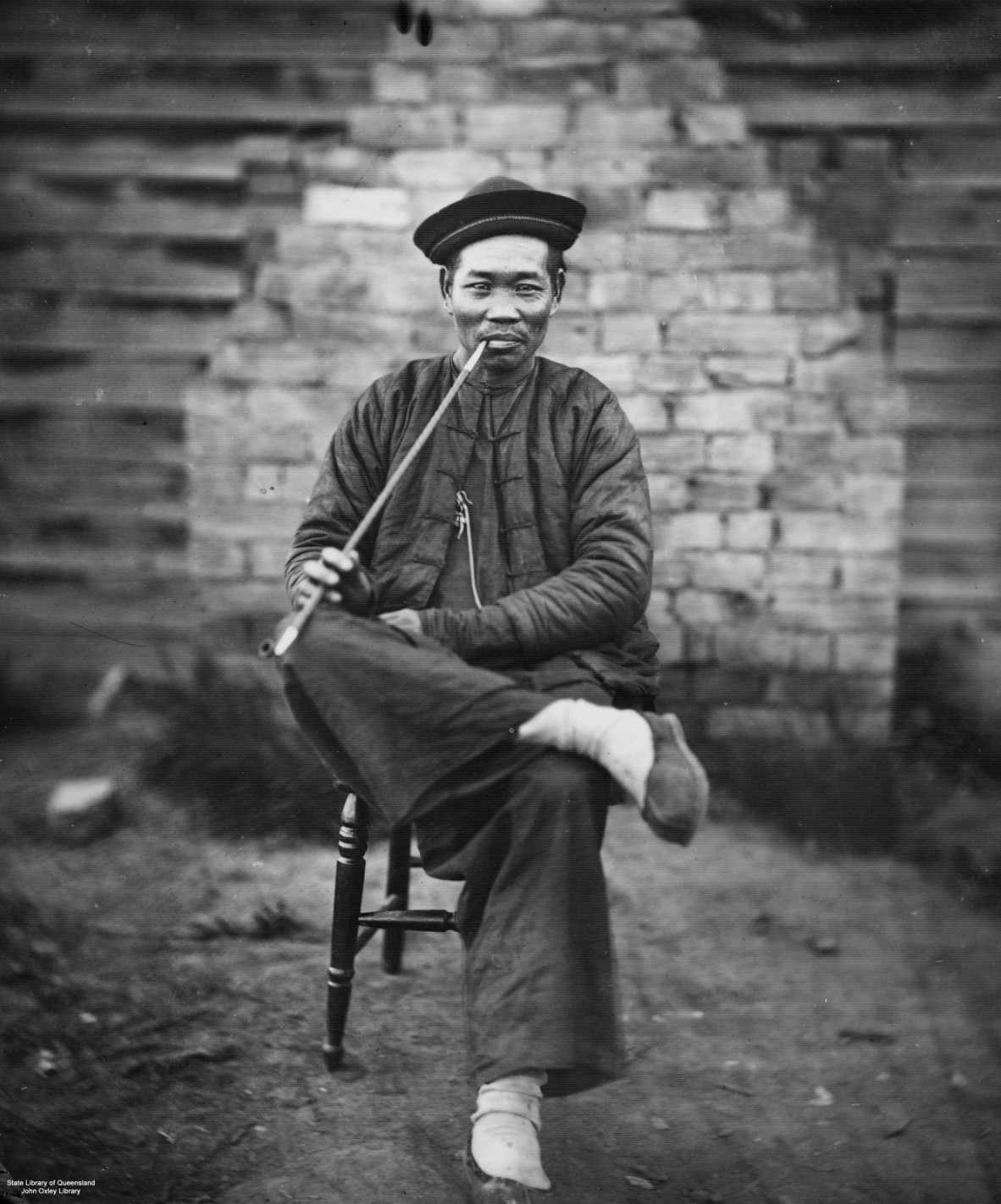
Chinese miner in traditional garb relaxing with a long stemmed pipe, Richard Daintree 1832-1878, negative number 51355, John Oxley Library, State Library of Queensland.
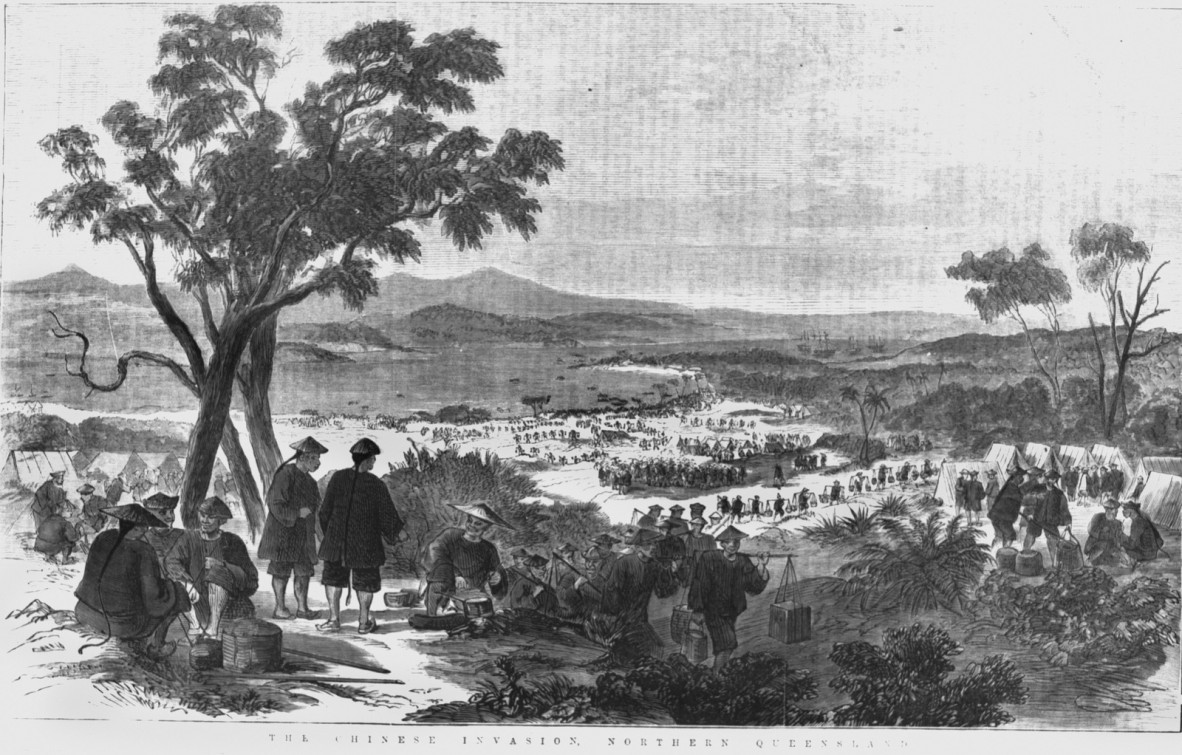
Chinese invasion, Northern Queensland, ca. 1875. Original hand coloured engraving from the John Oxley Library original art collection. Negative number 51297, John Oxley Library, State Library of Queensland.
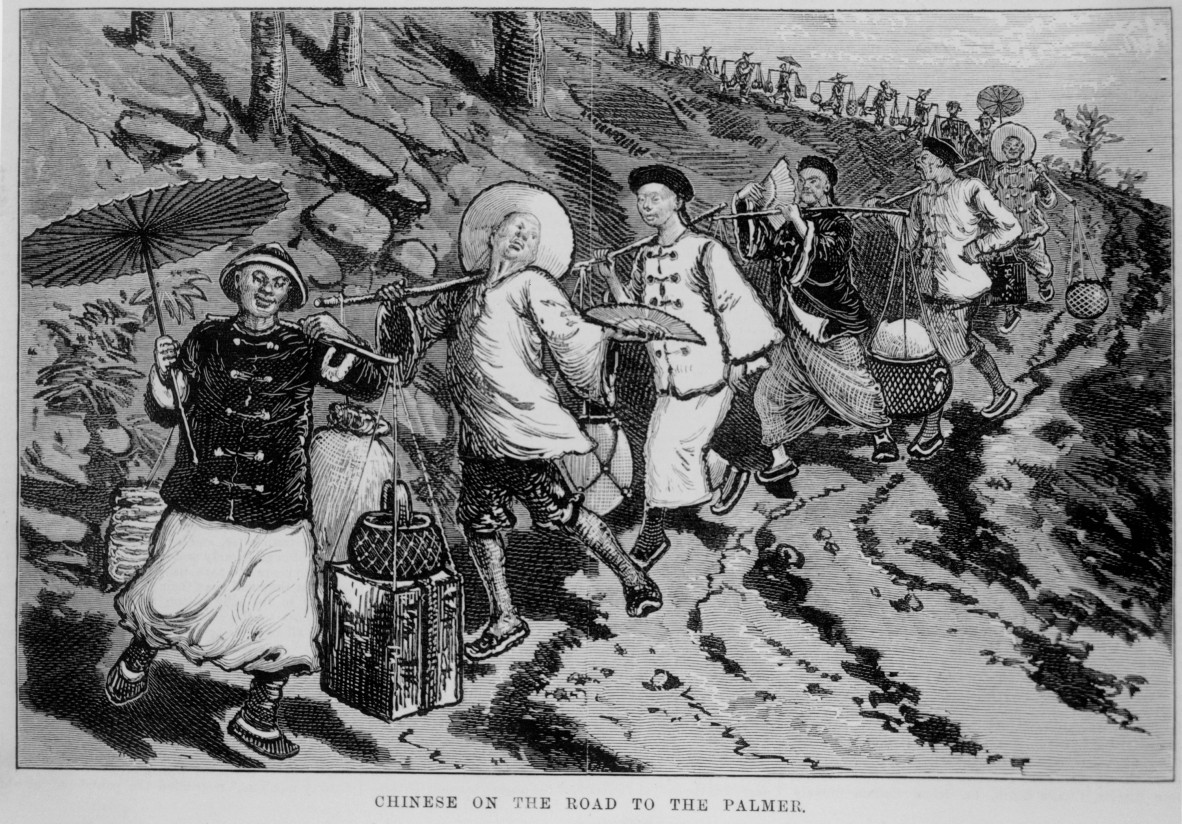
Drawing of Chinese people on the road to the Palmer Goldfield, Queensland, 1875. Negative number 57820, John Oxley Library, State Library of Queensland.
The Queensland Government’s response to anti-Chinese meetings held in Brisbane and the large number the Chinese men coming to the northern goldfields was to pass in 1877, The Chinese Immigration Regulations Act, which authorized a ten pound poll tax to be paid by ships' masters on every Chinese person transported on their vessel.
By 1877 there were about 16,000 Chinese on the Palmer goldfield, the Cooktown Herald reported on 29 May 1875 that in Palmerville and Maytown nearly every store, hotel, bakery, and butcher shop is kept by a Chinaman.
Like on all alluvial goldfields many Chinese miners were unsuccessful and living in a state of complete destitution due to cost of supplies and the intense competition for gold. An exodus began from the Palmer, many returned home to China, some went to southern cities and others settled into alternative employment in Cooktown and the newly formed settlement of Cairns. Chinese farmers were pioneers of the banana growing and sugar cane industries. Others found employment on northern pastoral stations as cooks and gardeners.
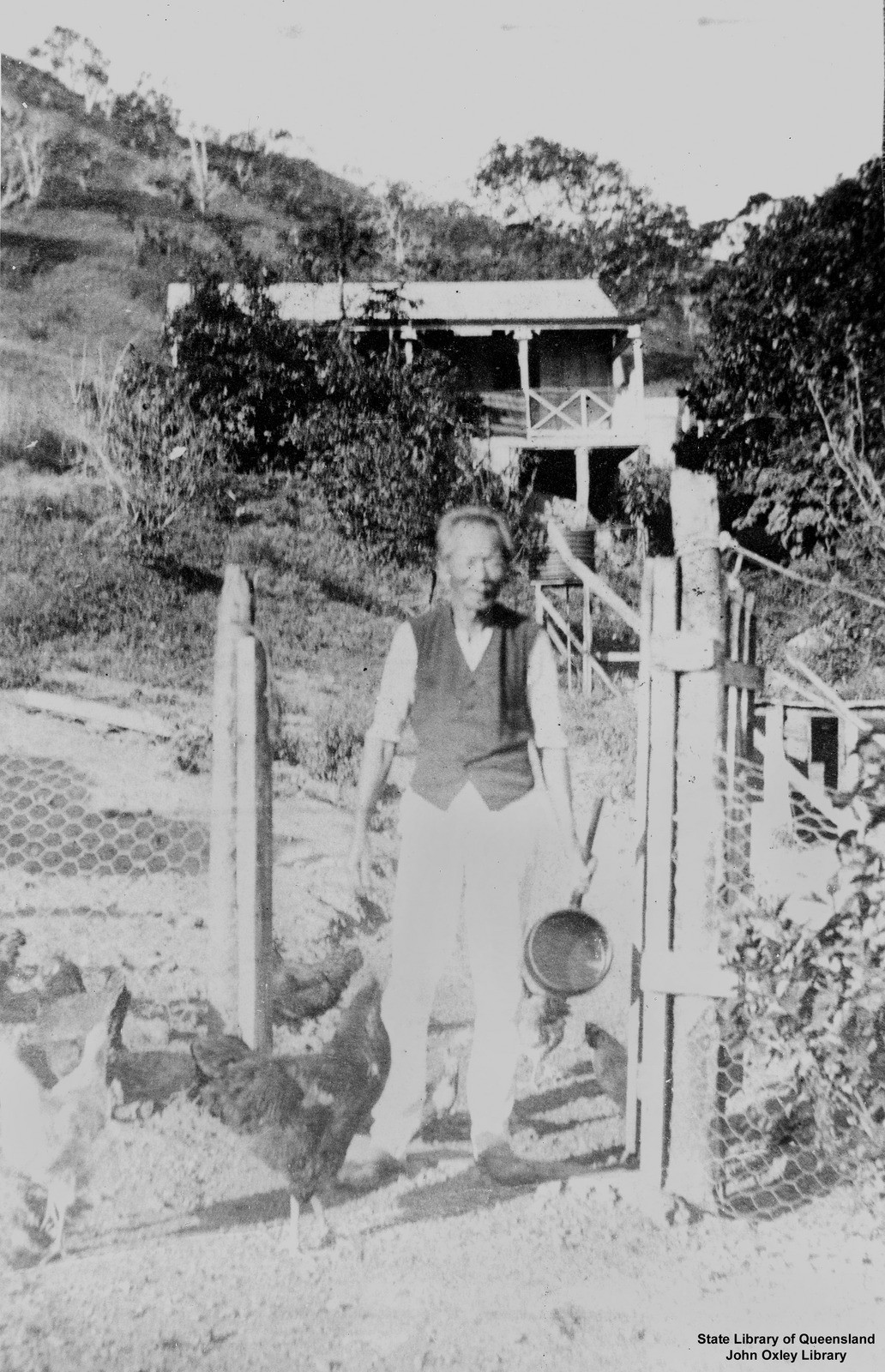
Chinese cook in Cooktown. Paddy, the Seaview Hotel cook. Negative number 31738, John Oxley Library, State Library of Queensland.
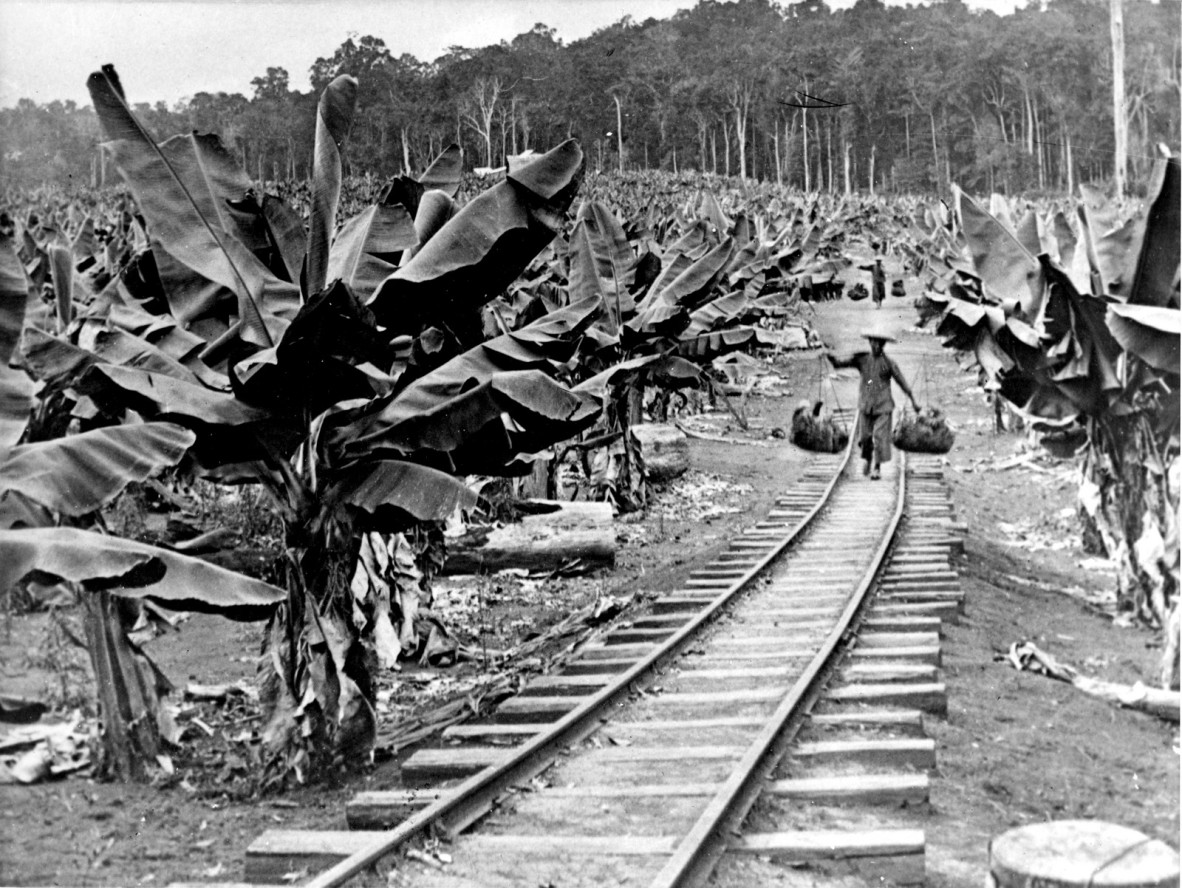
Chinese workers carrying bananas to a train, near Innisfail, negative number 19468, John Oxley Library, State Library of Queensland.
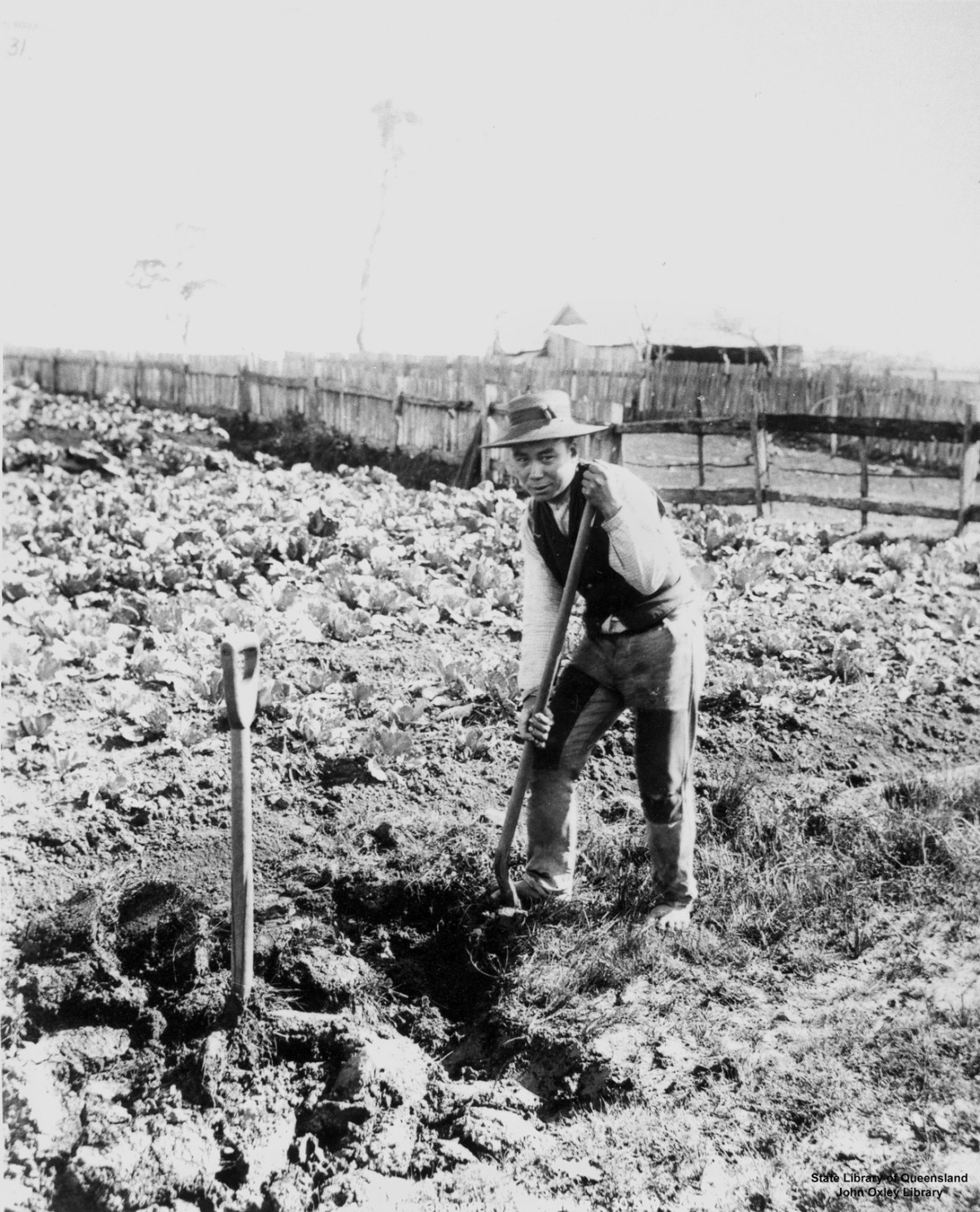
Chinese gardener, ca. 1893. Negative number 121707, John Oxley Library, State Library of Queensland
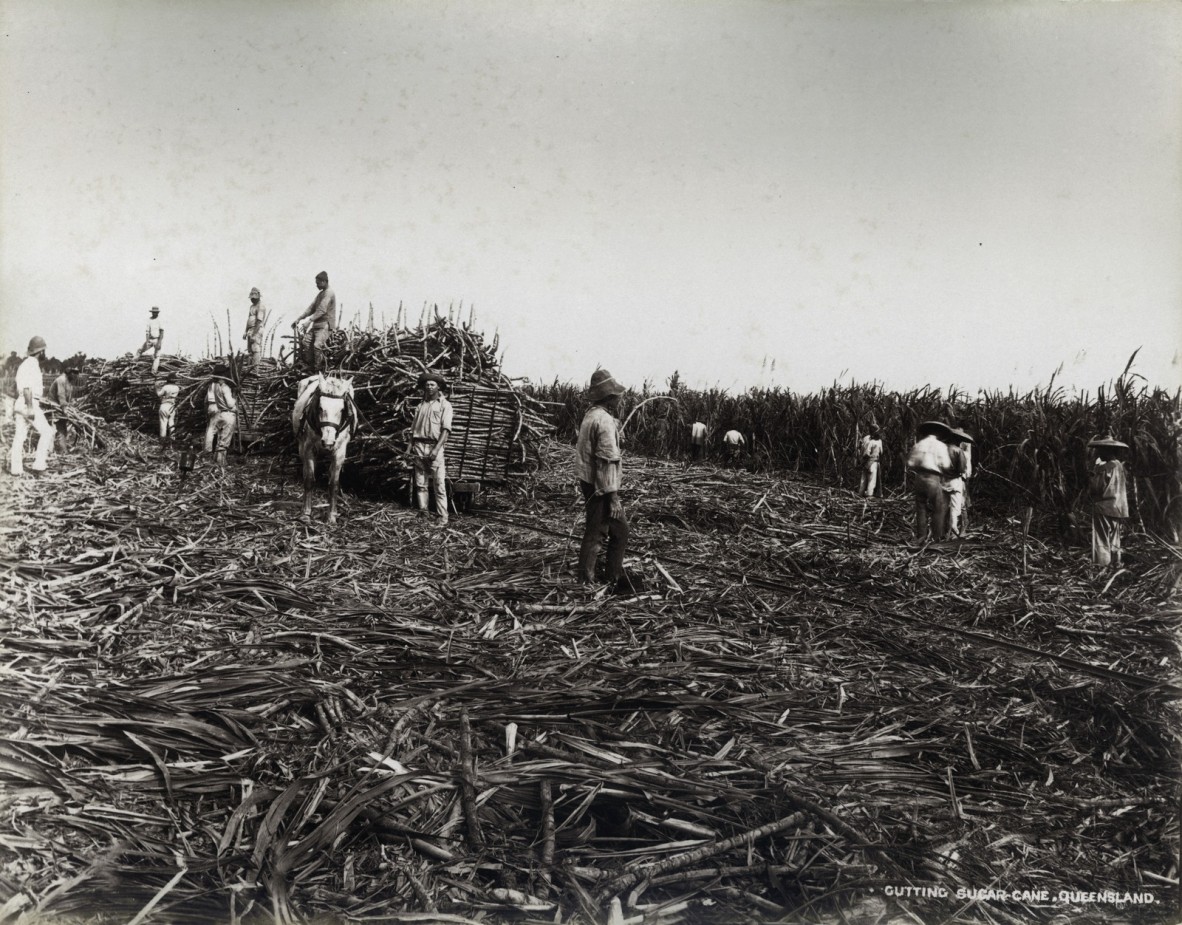
Workers cutting cane in the Cairns district, ca. 1890. Pictures include Chinese workers and South Sea Islander workers. API-6 Queensland Views Photograph Album ca. 1890, image number: API-006-0001-0011, John Oxley Library, State Library of Queensland.
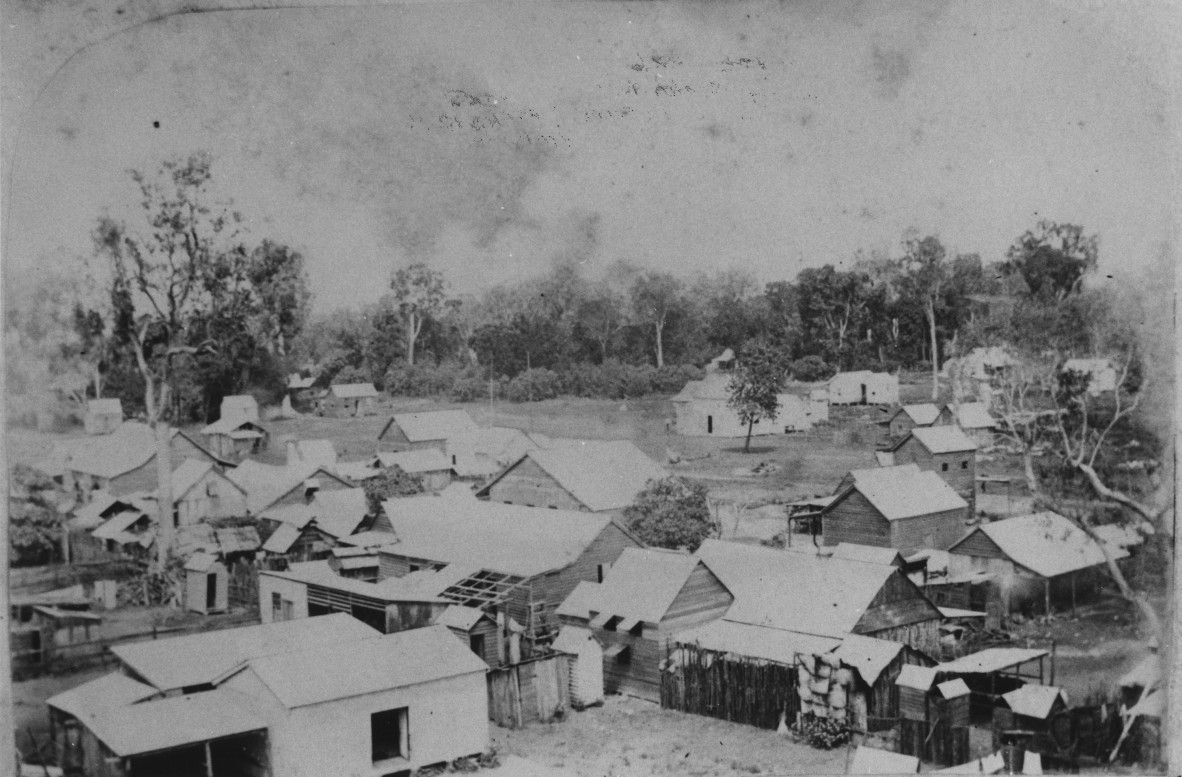
China Town, Cairns, 1886, negative number 76620, John Oxley Library, State Library of Queensland
In April 1887, construction of the Palmerston to Pine Creek railway began in the Northern Territory. Because of the large numbers of overseas Chinese who had been attracted to the Pine Creek goldfield, there was a surplus of labour. The unsuccessful miners found work as navvies on the railway. The construction job was largely a Chinese project because the successful contractors, the Millar Brothers had specified in their tender that they be allowed to employ Chinese labour. The canvas construction camp moved as the tracks were laid. Despite the wet season the Millar brothers and their construction teams laid 235 kilometres of first-class track through difficult country in twenty-nine months.
With the big construction job completed the Chinese labourers began to leave the Northern Territory. A number headed for Queensland overland in the hope for work on the Normanton to Croydon railway line or the Croydon Goldfield. The Queensland Parliament had approved the construction of the railway in 1886 with plans to link it eventually with the Cloncurry Copper Mine. It took until 1891 to complete the Normanton to Croydon part of the line but it never progressed further to Cloncurry.
In 1891 about forty out-of-work Chinese passed through Borroloola in several parties, intending to cross the Queensland border by the coast road and go on to Croydon. Next year bigger parties set out on the long walk by different routes.
The Maryborough Chronicle of 10 April 1894 carried a report "Chinese Crossing the Border" from their Camooweal correspondent that “droves of Chinese are in Camooweal from Port Darwin heading for the north Queensland goldfields”. Twenty-three crossed near Camooweal and forty-three others followed the Georgina River down and crossed near Lake Nash pastoral station.
The Queensland mounted police were waiting for both parties and conducted them back into the Northern Territory. The Northern Territory Times reported on 22 April 1892 in "Sifting, Local and Otherwise" that large droves of Chinese were clearing out of Pine Creek bound for Queensland. In 1896 a permit system was arranged between Queensland and the South Australian Government, which allowed holders to cross the border. The South Australian Government administered the Northern Territory until 1911. Travelling Chinese found without a permit were taken to Burketown and shipped back to Port Darwin. By 1898 the permit system had been cancelled and Chinese were prohibited from entering the Colony of Queensland.
With federation the responsibility for immigration control transferred to the Commonwealth Government, but Commonwealth legislation maintained the disqualification and discrimination enshrined in the legislation of the former colonies. One of the first Acts of the new Commonwealth Parliament was the Immigration Restrictions Act 1901. The new law aimed to limit non-white (particularly Asian) immigration to Australia. The Commonwealth Franchise Act 1902 disqualified from the Commonwealth franchise “Aboriginal natives of Australia, Asia, and the Islands of the Pacific except New Zealand”. The Commonwealth’s Invalid and Old-age Pensions Act of 1908 denied both forms of pensions to Asiatics (except those born in Australia) or Aboriginal natives of Australia, Africa, Islands of the Pacific. Clearly, it was intended that these people were to have no place in the future of White Australia.
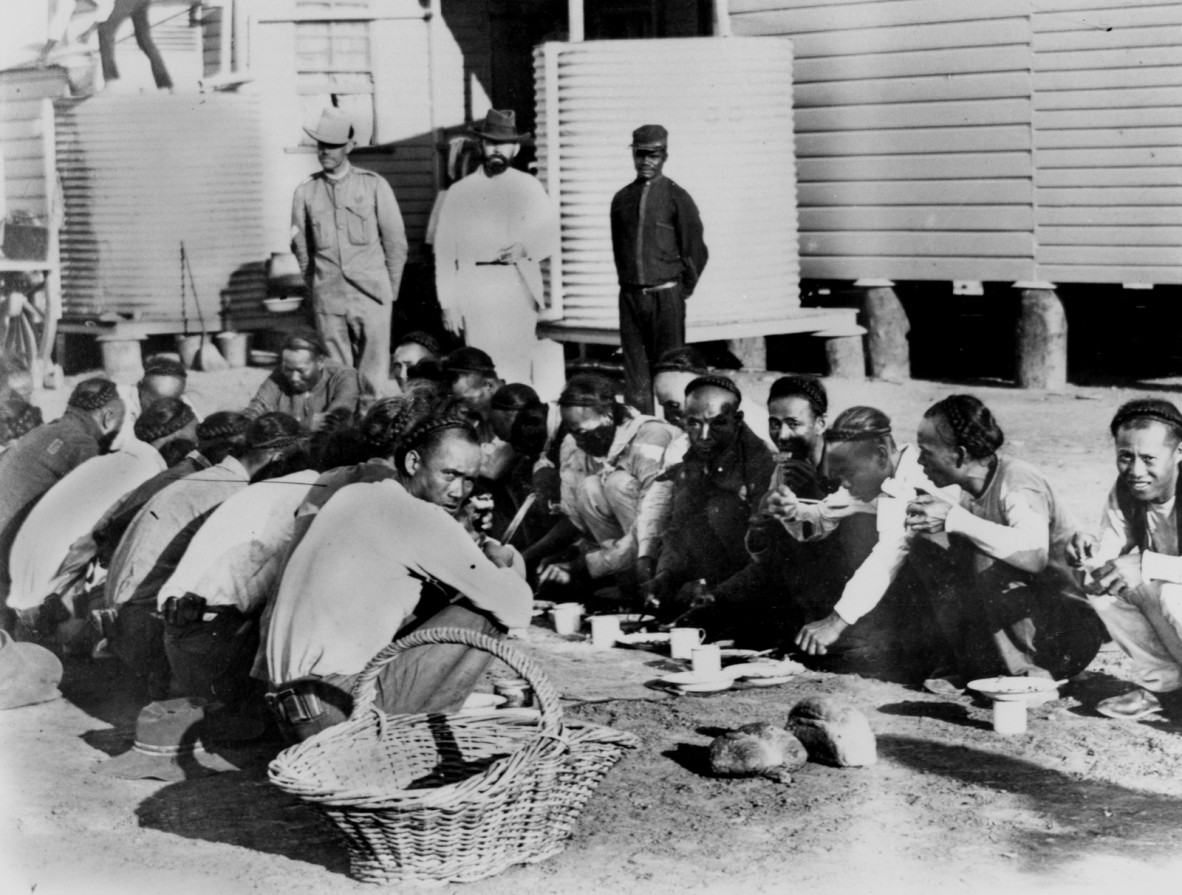
Chinese prisoners being fed under supervision outside in the Goal Yard, Burketown, Queensland, ca. October 1900. These Chinese workers were arrested crossing the Northern Territory/Queensland border without permission. They were arraigned to Normanton for trial. There were 25 people in total. (Original photograph one of four featured in the Queenslander, 27 October 1900, p. 876). Negative number 44909, John Oxley Library, State Library of Queensland.
David Huggonson
Related collections:
- Geoffrey Blainey, The Rush that Never Ended: A History of Australian Mining, Melbourne University Press ,1963, PP 88-96.
- Kathryn Cronin, “The Yellow Agony”, part three in Exclusion, Exploitation and Extermination: Race Relations in Colonial Queensland by Raymond Evans, Kay Saunders, Kathryn, Australian and New Zealand Book Company, Sydney 1975.
- John McCorquodale, The Legal Classification of Race In Australia, Aboriginal History, Volume ten, 1986, pp 7-24.
- Eric Rolls, The Build-up to White Australia in Citizens : continuing the epic story of China's centuries-old relationship with Australia ... : flowers and the wide sea, University of Queensland Press, 1996 pp 1-42.
- C R May, The Chinese Community in North Queensland, espace library, University of Queensland.
- Blog - Chinese Business History in Queensland - Gold rush: 1851-1881, Rutian Mi.
- Blog - Chinese Business History in Queensland Farming: 1882-1900, Rutian Mi.
Read other blogs by David Huggonson.
Comments
Your email address will not be published.
We welcome relevant, respectful comments.